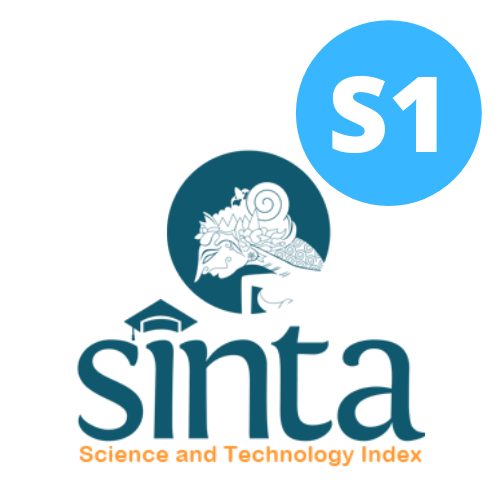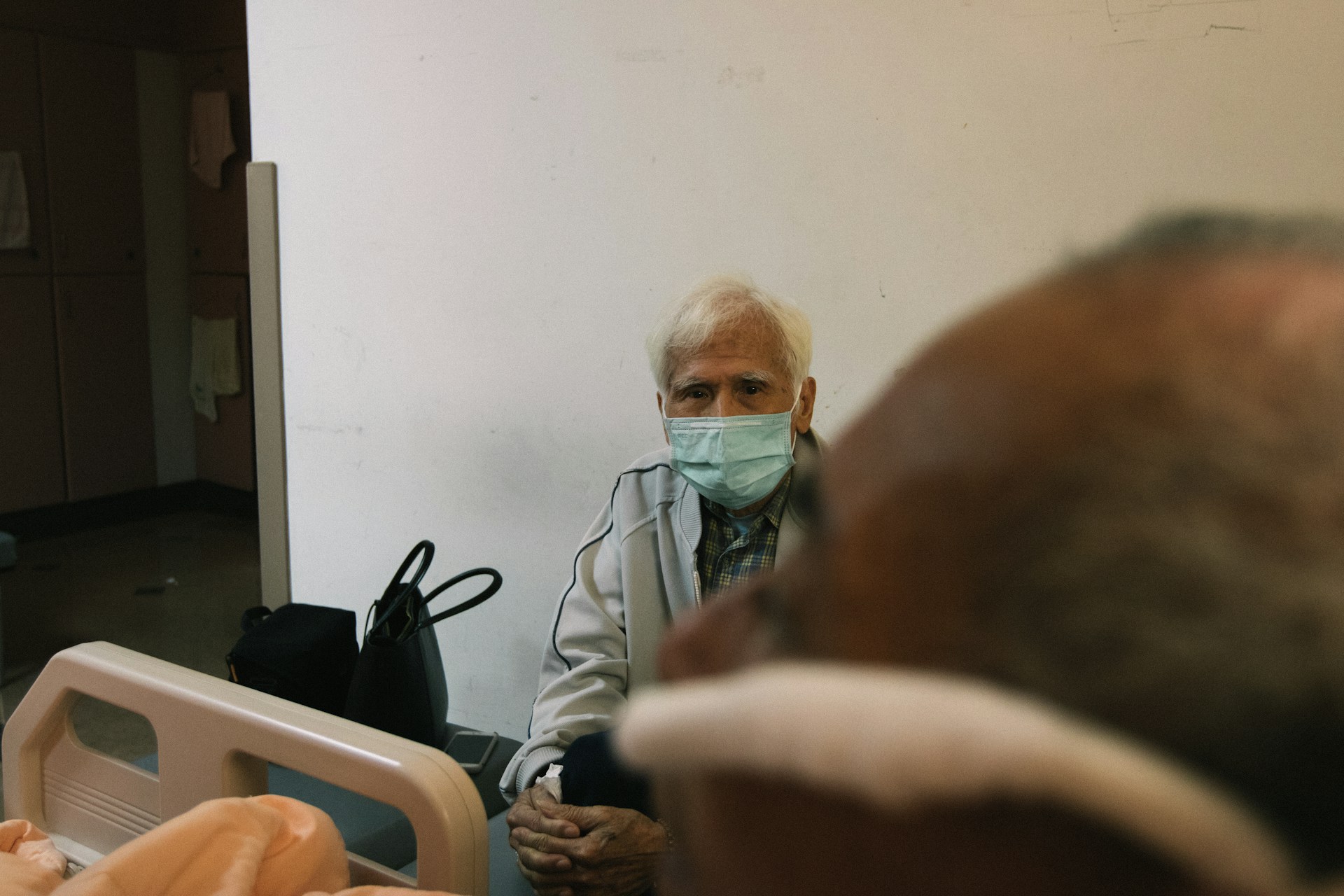The Risk Factors for Anemia in Women at Third Trimester of Pregnancy in the Primary Health Center of Tanjung Sekayam: A Case-Control Study
Faktor Risiko Anemia pada Ibu Hamil Trimester Ketiga di Puskesmas Tanjung Sekayam: Studi Kasus-Kontrol

Downloads
Background: The presence of anemia in pregnant women significantly affects the health of both mothers and their fetuses. Around 37% of pregnant women worldwide experience anemia. In the Community Health Center of Tanjung Sekayam, the prevalence of anemia in women at the third trimester of their pregnancy was notably high, at 50.4%.
Objectives: This study aims to identify the risk factors for anemia in women at third trimester of pregnancy in the working area of the Community Health Center of Tanjung Sekayam Subdistrict, Sanggau Regency.
Methods: This study was an observational research with a case-control design. The study population consisted of 153 women at third trimester of pregnancy, receiving antenatal care in the Community Health Center of Tanjung Sekayam. The samples included 62 respondents, selected through a simple random sampling, comprising of 31 cases and 31 controls. Data were collected using questionnaires and analyzed with the Chi-Square test to assess the factors associated with the occurrence of anemia.
Results: There was a relation among maternal age (p=0.000; OR=22.9), interpregnancy interval (p=0.024; OR=6.9), parity (p=0.011; OR=2.2), nutritional status (chronic energy deficiency) (p=0.000; OR=11.3), compliance (p=0.021; OR=3.9), and knowledge (p=0.001; OR=8.2) and the prevalence of anemia in the third trimester. However, the family support did not show any significant relation.
Conclusions: Maternal age, pregnancy interval, parity, nutritional status, compliance with iron tablet intake, and knowledge are related to the prevalence of anemia in third trimester of pregnancy. Family support did not show any significant relation with the incidence of anemia, possibly due to the limitations in measuring the family support itself and other factors, such as discomfort in consuming iron tablets and forgetfulness. More structured interventions and intensive education on the importance of iron and nutrition during the pregnancy are needed to reduce the risk of anemia.
World Health Organization. Anaemia. Retrieved from https://www.who.int/health-topics/anaemia#tab=tab_1 (2022).
Ministry of Health of the Republic of Indonesia. Indonesian Health Survey 2023 in Numbers. (2023).
Health Department of West Kalimantan Province. Profile of the Health Department of West Kalimantan Province Year 2019. Retrieved from https://datacloud.kalbarprov.go.id/index.php/s/6Gj9RFNC3XgyHmf?path=%2FProfil%20Kesehatan%2FProvinsi#pdfviewer (2020).
Health Department of West Kalimantan Province. Profile of the Health Department of West Kalimantan Province Year 2018. Retrieved from https://datacloud.kalbarprov.go.id/index.php/s/6Gj9RFNC3XgyHmf?path=%2FProfil%20Kesehatan%2FProvinsi#pdfviewer (2019).
Health Department of Sanggau. Profile of Health Department of Sanggau Regency Year 2019. (Health Department of Sanggau Regency, 2020).
De Sá, S. A. et al. Anemia In Pregnancy: Impact on Weight and in the Development of Anemia In Newborn. Nutr Hosp 32, 2071–2079 (2015).
Arisman. Nutrient in the Cycle of Life. (EGC Medical Textbook, Jakarta, 2010).
Hanifa Wiknjosastro. Obstetrics. (Yayasan Bina Pustaka Sarwono Prawirohardjo, Jakarta, 2007).
Laelasari, L. & Natalia, L. Relation among Knowledge, Nutrient Status, Adherence in Consuming Fe Tablet, and the Occurrence of Anaemia in the Mother at the Third Trimester of Pregnancy in the Working Area of Technical Executing Unit of Public Health Center in Saladagedang, Majalengka Regency Year 2016.. Midwife Journal 2, 1–9 (2016).
Juwita, R. Relation of Counselling and Family Support towards the Adherence of Pregnant Mother to Consume Fe Tablet. Jurnal Endurance : Scientific Study on the Health Problem 3, 112–120 (2018).
Uche-Nwachi, E. O. et al. Anaemia in Pregnancy: Associations with Parity, Abortions and Child Spacing in Primary Healthcare Clinic Attendees in Trinidad and Tobago. Afr Health Sci 10, 66 (2010).
Sabina Azhar, B., Islam, M. S. & Karim, M. R. Prevalence of Anemia and Associated Risk Factors among Pregnant Women Attending Antenatal Care in Bangladesh: A Cross-Sectional Study. Prim Health Care Res Dev 22, 1–10 (2021).
Redowati, T. E. et al. Relation among Age, Gravid, Pregnancy Interval, and the Occurrence of Anemia in Pregnant Mothers in the Working Area of Public Health Center of Gantiwarno Year 2017. Journal of Health 4, (2018).
Lin, L. et al. Prevalence, Risk Factors and Associated Adverse Pregnancy Outcomes of Anaemia in Chinese Pregnant Women: A Multicentre Retrospective Study. BMC Pregnancy Childbirth 18, (2018).
Sinsin. Pregnancy and Delivery Periods. (PT. Elex Media Komputindo, Jakarta, 2008).
Manuaba. Sciences of Obstetrics, Gynaecological Disease, and the Family Planning. (EGC, Jakarta, 2014).
Ministry of Health of the Republic of Indonesia. Indonesian Health Profile 2021. Retrieved from https://www.kemkes.go.id/downloads/resources/download/pusdatin/profil-kesehatan-indonesia/Profil-Kesehatan-2021.pdf (2022).
Berhe, B. et al. Prevalence of Anemia and Associated Factors among Pregnant Women in Adigrat General Hospital, Tigrai, Northern Ethiopia, 2018. BMC Res Notes 12, (2019).
Weiss, A., Sela, H. Y., Rotem, R., Grisaru-Granovsky, S. & Rottenstreich, M. Recurrent Short Interpregnancy Interval: Maternal and Neonatal Outcomes. Eur J Obstet Gynecol Reprod Biol 264, 299–305 (2021).
Mruts, K. B., Gebremedhin, A. T., Tessema, G. A., Scott, J. A. & Pereira, G. Interbirth Interval and Maternal Anaemia in 21 Sub-Saharan African Countries: A Fractional-Polynomial Analysis. PLoS One 17, (2022).
Jasmi. Relation among Parity, Age, and the Occurrence of Anaemia in the Pregnant Mother in the Public Health Center of Melur, Sukajadi District, Pekanbaru City. Journal of Mothers and Children 1, 43–49 (2016).
Derso, T., Abera, Z. & Tariku, A. Magnitude and Associated Factors of Anemia among Pregnant Women in Dera District: A Cross-Sectional Study in Northwest Ethiopia. BMC Res Notes 10, (2017).
Sulistyoningsih, H. Nutrient for the Health of Mothers and Children. (Graha Ilmu, Yogyakarta, 2012).
Ghosh, S. et al. Nutrition-Specific and Nutrition-Sensitive Factors Associated with Mid-Upper Arm Circumference as a Measure of Nutritional Status in Pregnant Ethiopian Women: Implications for Programming in the First 1000 Days. PLoS One 14, (2019).
Mahmudah, U., Cahyati, W. H. & Wahyuningsih, S. A. Factors of Mother and Babies Related to the Perinatal Death Occurrence. KEMAS: Journal of Public Health 7, 41–50 (2011).
Noptriani, S. & Simbolon, D. Probability of Non-Compliance to the Consumption of Iron Tablets in Pregnant Women in Indonesia. J Prev Med Hyg 63, E456–E463 (2022).
Gebre, A. & Mulugeta, A. Prevalence of Anemia and Associated Factors among Pregnant Women in North Western Zone of Tigray, Northern Ethiopia: A Cross-Sectional Study. J Nutr Metab 2015, (2015).
Bahati, F., Kairu-Wanyoike, S. & Nzioki, J. M. Adherence to Iron and Folic Acid Supplementation during Pregnancy among Postnatal Mothers Seeking Maternal and Child Healthcare at Kakamega Level 5 Hospital in Kenya: A Cross-Sectional Study. Wellcome Open Res 6, (2021).
Dabas, S., Joshi, P., Agarwal, R., Yadav, R. K. & Kachhawa, G. Impact of Audio Assisted Relaxation Technique on Stress, Anxiety and Milk Output among Postpartum Mothers of Hospitalized Neonates: A Randomized Controlled Trial. Journal of Neonatal Nursing 25, 200–204 (2019).
Yamashita, T. et al. Maternal Knowledge Associated with the Prevalence of Iron and Folic Acid Supplementation Among Pregnant Women in Muntinlupa, Philippines: A Cross-Sectional Study. Patient Prefer Adherence 15, 501–510 (2021).
Souganidis, E. S. et al. Relationship of Maternal Knowledge of Anemia with Maternal and Child Anemia and Health-Related Behaviors Targeted at Anemia among Families in Indonesia. Matern Child Health J 16, 1913–1925 (2012).
Mabuza, G. N., Waits, A., Nkoka, O. & Chien, L. Y. Prevalence of Iron and Folic Acid Supplements Consumption and Associated Factors among Pregnant Women in Eswatini: A Multicenter Cross-Sectional Study. BMC Pregnancy Childbirth 21, (2021).
Taye, B., Abeje, G. & Mekonen, A. Factors Associated with Compliance of Prenatal Iron Folate Supplementation among Women in Mecha District, Western Amhara: A Cross-Sectional Study. Pan Afr Med J 20, (2015).
Notoatmodjo, S. Science of Health Behavior. (Rineka Cipta, Jakarta, 2007).
Siantarini, P. K., S, S. & Rahajeng, I. M. Relation between Knowledge Level on Anemia and the Behavior in Meeting the Need for Iron in the Pregnant Mothers. Coping: Community of Publishing in Nursing 6, 27–34 (2019).
Choudhuri, P., Debbarma, A., Debbarma, S. & Reang, T. Compliance to Iron and Folic Acid Tablets among Pregnant Women Attending Antenatal Clinic in Agartala Government Medical College. J Family Med Prim Care 11, 2763 (2022).
Triharini, M. et al. Adherence to Iron Supplementation amongst Pregnant Mothers in Surabaya, Indonesia: Perceived Benefits, Barriers and Family Support. Int J Nurs Sci 5, 243–248 (2018).
Friedman, Bouden & Jones. Textbook of the Family Nursing. (Research of EGC Theory and Practice, Jakarta, 2010).
Zavaleta, N., Caulfield, L. E., Figueroa, A. & Chen, P. Patterns of Compliance with Prenatal Iron Supplementation among Peruvian Women. Matern Child Nutr 10, 198–205 (2014).
Pathirathna, M. L., Wimalasiri, K. M. S., Sekijima, K. & Sadakata, M. Maternal Compliance to Recommended Iron and Folic Acid Supplementation in Pregnancy, Sri Lanka: A Hospital-Based Cross-Sectional Study. Nutrients 12, 1–10 (2020).
Copyright (c) 2024 Amerta Nutrition

This work is licensed under a Creative Commons Attribution-ShareAlike 4.0 International License.
AMERTA NUTR by Unair is licensed under a Creative Commons Attribution-ShareAlike 4.0 International License.
1. The journal allows the author to hold the copyright of the article without restrictions.
2. The journal allows the author(s) to retain publishing rights without restrictions
3. The legal formal aspect of journal publication accessibility refers to Creative Commons Attribution Share-Alike (CC BY-SA).
4. The Creative Commons Attribution Share-Alike (CC BY-SA) license allows re-distribution and re-use of a licensed work on the conditions that the creator is appropriately credited and that any derivative work is made available under "the same, similar or a compatible license”. Other than the conditions mentioned above, the editorial board is not responsible for copyright violation.












































